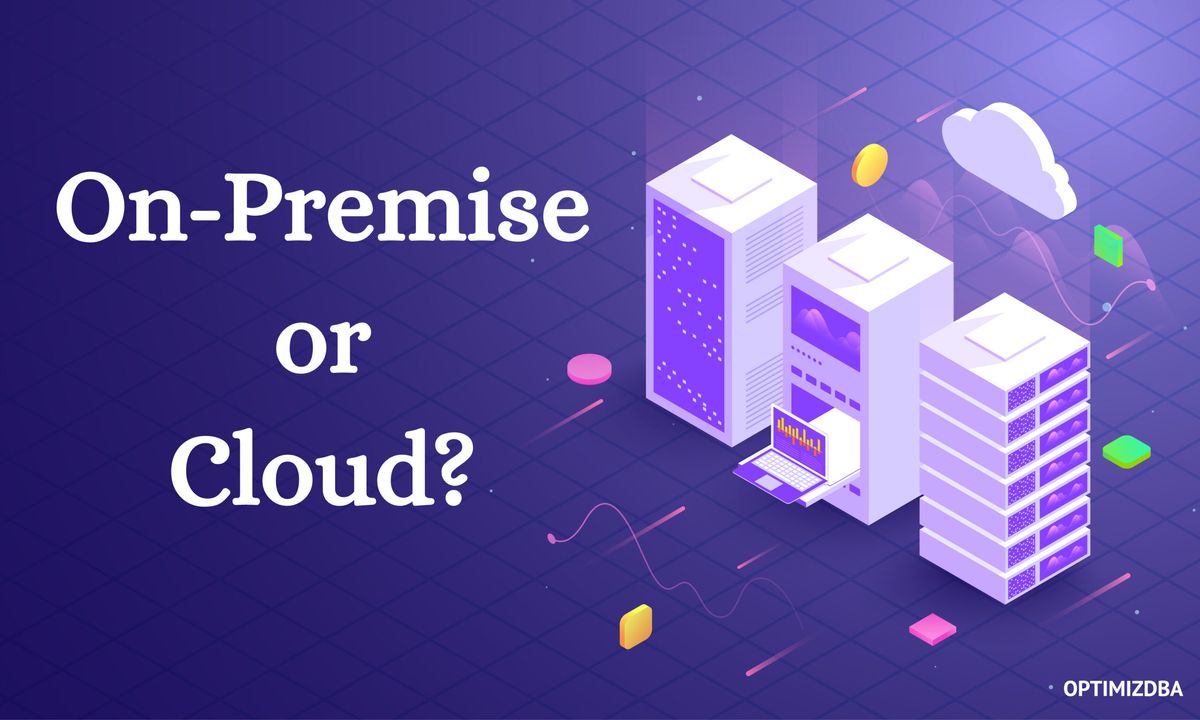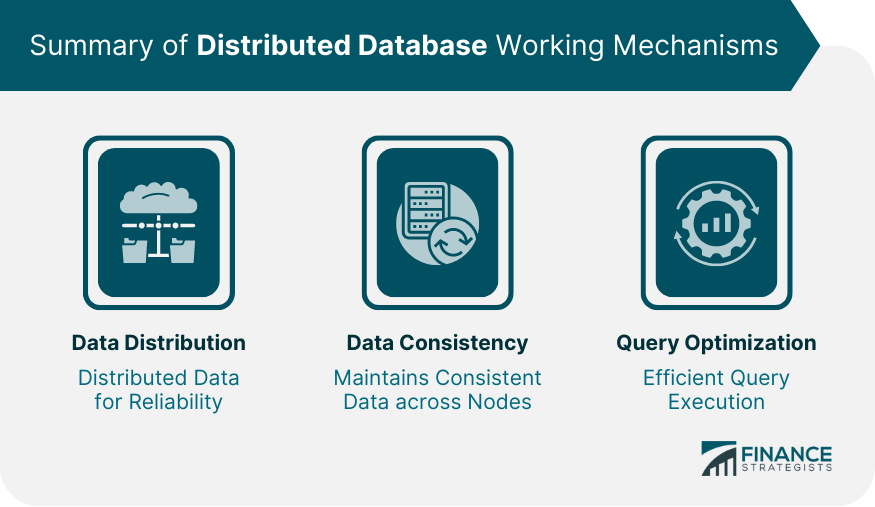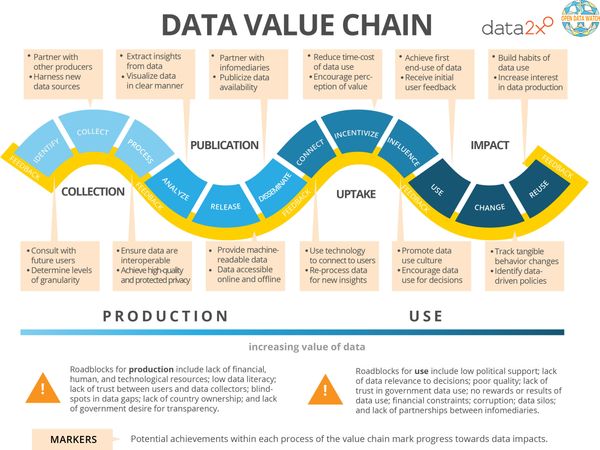Database management is a constant process with ever-increasing scope for learning and implementing. Performance tuning a database is science but when we take into consideration the discussion of managed databases v/s on-premise databases, it becomes more than just metrics and numbers, it becomes a series of incidents driven to achieve maximum throughput.
And for this very reason, when you look at the metrics required for each of the systems, you will realize the depth involved with them. Each varies based on the roles and responsibilities along with the outcomes and desired results. While the goal for a managed database service is the same as an on-premise database, there is a difference between the two in terms of services and layers that separate the two from each other.
On-Premise v/s Managed databases on the cloud: What is this all about?
For a long time, an on-premise database was the only option for an enterprise. In this, the control over the organizational data and software was inside the physical confines of the enterprise. Installed in the company’s server behind their private firewall systems, on-premise databases have traditionally helped organizations maintain their data.
But that was before cloud computing gained popularity. With its ability to offer flexibility and ease of doing business to enterprises, managed database systems are now the go-to infrastructure for a lot of businesses. And if it saves you money and time, why shouldn’t you do it? Right? Well, while that is true in several cases, each of the infrastructure systems comes with a set of features and benefits as well as drawbacks.
Let’s now answer the question, “Where does each of them fit?” And to answer that, we will take into consideration certain factors that will help in choosing the right database infrastructure. This will lead to you, as a decision-maker, understanding which one fits your case and offers you maximum output.
On-Premise database system: What is it?
As previously discussed, these database infrastructure systems have been traditionally used in organizations. In these systems, the systems are handled by a team of Database Administrators (DBAs). These individuals are responsible for the entire setup and working of the database. The company sets up a whole line of servers capable enough to handle the peak load of the system without any failure or downtime.
Not only is the database managed, updated, upgraded, and optimized by the internal IT team of the organization but any new installations or additions are taken care of by them. Data security is the utmost priority for every organization but while some can rely on modern solutions such as cloud computing, there are industries with seamless regulations making on-premise the ‘only’ option for them.
Managed databases on cloud: The talk of the town
Unlike on-premise databases, in a managed databases, a single database host or provider takes care of the server system and further offers it to enterprises and organizations as per their need and requirement. This means that the organizations opting for managed databases do no essentially need to invest in hardware and maintenance.
They can simply pay a third-party provider as per their utilization and avoid any extra expenditure. Moreover, it offers quick implementation and provisioning since the server is pre-configured, it is almost ready-to-use for companies. It saves time and effort in setting up the system every time.
One of the better-known names in the market is MongoDB Atlas often known as managed MongoDB. A cloud-based service, it is often deployed to attain fully managed systems over AWS, Google cloud, and Azure. It offers scalability and compliance as per the latest standards.
Azure Database for MySQL is a fully managed MySQL on cloud service by Microsoft. According to Microsoft, “Azure Database for MySQL is easy to set up, operate and scale. Enjoy advanced security, same-zone or zone-redundant high availability and a service-level agreement (SLA) of up to 99.99 percent.” A managed database solution can also be found on cloud providers for other databases such as PostgreSQL , and DynamoDB as well.
Surprisingly, the demand for cloud has been on the rise ever since. A report by Software advice shows that the demand for cloud deployment preference increased from 12% in 2008 to 87% in 2014.
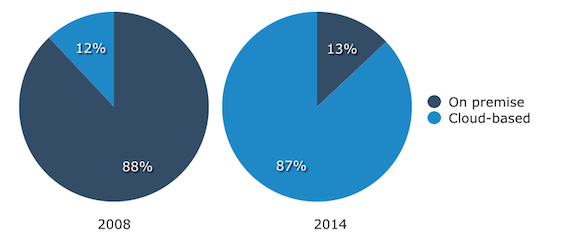
But, is this the best option for every enterprise out there? Let’s find out through a series of key observations.
What are the key differentiators between the two?
Hosting
The first key difference between the two models is hosting. As previously mentioned, on-premise hosting is maintained at the organizational level. This means added expense for server management and expansion.
At the same time, the Cloud service provider (CSP) offering over the cloud services is responsible for the maintenance of the server. This means responsibility for every activity related to the server such as database updates, upgrades, repairs, and more. The type of hosting will also affect the overall cost. For example, if you were to host Microsoft SQL Server on-premise, it would need a high initial investment. However, if cloud hosting were to be selected where database clusters will be deployed then the long term cost would be very high despite a low initial investment.
Delivery and Workflow

Cloud is known for its ability to offer a multitude of services including access to unlimited memory, on-demand service for essential and emergency cases, timely backups of the data, automatic software updates, capability to handle increased workloads including peak times and over them, and a faster application launch and release time.
When it comes to the on-premise database model, this is not always the case. Any of the above situations need intervention from the experts and in most cases physical access to the server and equipment. But despite the flexibility offered by managed databases, it still isn’t a long-term solution for organizations that rely on on-premise infrastructure.
For example, while an on-premise database might need physical access to increase memory, it can use managed databases as a temporary solution to the increased demand for memory. If the on-premise database is up-to-date with the requirements of the business and has sufficient backup to prevent any interruptions, it will perform equally well as a cloud-managed database.
Deployment
It is obvious that having an on-premise database means added expense for infrastructural maintenance including the investment for equipment and manpower. It also comes with a higher risk of failure and downtime. The entire ownership depends on the organization and the team working within.
At the same time, cloud-managed database systems offer better security but also offer a simpler implementation methodology. Because of the pay-as-you-go model, utilization of the virtual environment is high leading to better ROI. Because of the pre-configured systems and better support services being offered. This makes the entire process of deploying systems and expansion much easier. In some cases, the efficiency of a DBA in cloud-managed systems can be ten times as much as a DBA working with an on-premise model. Database migration services will help you to deploy from one deployment environment to another.
Bandwidth Enhancement and Energy Saving
While these two points correlate with previously mentioned factors, it is important as a decision-maker to understand how energy savings come into the picture with both systems.
As we are aware of the fact that organizations working with an on-premise database are responsible for the entire management of the systems, it is important to realize that energy consumption is a major part of the same. With on-premise setups, the energy consumption cost is ever increasing. Moreover, 100% of the power required by a server needs to be taken care of by the organization.
At the same time, with a cloud database, about 10-20% of the power required by a server is used. This prevents additional expenditure on power and also helps in increasing energy saving.
The same is the case with bandwidth requirements. In cases where the organization needs to increase its bandwidth requirement, the on-premise model needs installation of new equipment which requires capital investment as well as time. But, with a cloud-based service, all an organization needs to do is upgrade its bandwidth plan and start utilizing the additional bandwidth that is required.
Access and Control
Blackouts can be disastrous and affect the business heavily. It is a common scenario that any database can face. But how do you come out of it?
Well, with a cloud-managed system it is rather easier to tackle these challenges since there is a provision of virtual tools that can help back up, restore, and reboot their systems. With a managed database, it is not so easy and needs intervention on the level of the organization to solve all these problems.
The Conclusion:
Well, after understanding the core components of running a successful enterprise and ensuring a smooth flow of operations, it can be seen that Cloud-managed databases carry an edge over on-premise systems. It is fast, convenient, and more feasible.
But at the same time, we cannot ignore the fact that there are organizations that are regularised in a certain manner and need to follow certain guidelines. One of these is the fact that the data needs to be managed privately in on-premise database infrastructures. Moreover, organizations with long-term goals often focus on expenses for a longer period, usually 5 years or more. During this period the cost of a managed setup often surpasses the cost of on-premise infrastructures making it a better option.
As can be seen in the data by Enterprise Storage Forum below, over 3 years, the cost of cloud surpasses on-premise. This usually happens as the storage requirements increase gradually and then all at once.
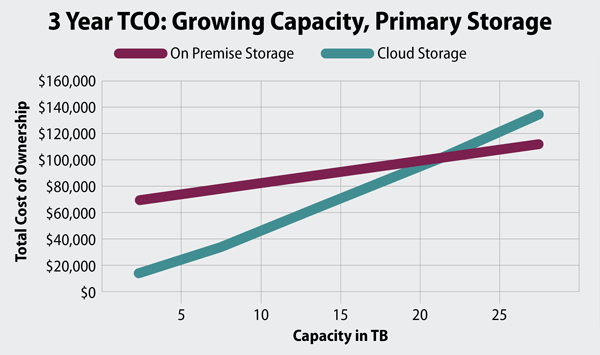
Is there a best option?
While usually with two sides, there is always a winner. But is there a winner here? Not really. And the reason behind this is the number of factors that we need to take into consideration. These factors include:
1. The Growth and expansion plans of the firm: If an enterprise is just starting but has a route mapped to achieving a huge amount of users which will eventually increase the demand, on-premise might be better suited.
2. Subscription Model: In case an organization is planning to further offer subscriptions to its users that can easily be managed by the Cloud service provider and still leave the organization with money, a managed database might be a better option as it prevents a whole level of support and management expenses.
Database management is a constant process with ever-increasing scope for learning and implementing. Performance tuning a database is science but when we take into consideration the discussion of managed databases v/s on-premise databases, it becomes more than just metrics and numbers, it becomes a series of incidents driven to achieve maximum throughput.
And for this very reason, when you look at the metrics required for each of the systems, you will realize the depth involved with them. Each varies based on the roles and responsibilities along with the outcomes and desired results. While the goal for a managed database service is the same as an on-premise database, there is a difference between the two in terms of services and layers that separate the two from each other.
On-Premise v/s Managed databases on the cloud: What is this all about?
For a long time, an on-premise database was the only option for an enterprise. In this, the control over the organizational data and software was inside the physical confines of the enterprise. Installed in the company’s server behind their private firewall systems, on-premise databases have traditionally helped organizations maintain their data.
But that was before cloud computing gained popularity. With its ability to offer flexibility and ease of doing business to enterprises, managed database systems are now the go-to infrastructure for a lot of businesses. And if it saves you money and time, why shouldn’t you do it? Right? Well, while that is true in several cases, each of the infrastructure systems comes with a set of features and benefits as well as drawbacks.
Let’s now answer the question, “Where does each of them fit?” And to answer that, we will take into consideration certain factors that will help in choosing the right database infrastructure. This will lead to you, as a decision-maker, understanding which one fits your case and offers you maximum output.
On-Premise database system: What is it?
As previously discussed, these database infrastructure systems have been traditionally used in organizations. In these systems, the systems are handled by a team of Database Administrators (DBAs). These individuals are responsible for the entire setup and working of the database. The company sets up a whole line of servers capable enough to handle the peak load of the system without any failure or downtime.
Not only is the database managed, updated, upgraded, and optimized by the internal IT team of the organization but any new installations or additions are taken care of by them. Data security is the utmost priority for every organization but while some can rely on modern solutions such as cloud computing, there are industries with seamless regulations making on-premise the ‘only’ option for them.
Managed databases on cloud: The talk of the town
Unlike on-premise databases, in a managed database, a single database host or provider takes care of the server system and further offers it to enterprises and organizations as per their need and requirement. This means that the organizations opting for managed databases do no essentially need to invest in hardware and maintenance.
They can simply pay a third-party provider as per their utilization and avoid any extra expenditure. Moreover, it offers quick implementation and provisioning since the server is pre-configured, it is almost ready-to-use for companies. It saves time and effort in setting up the system every time.
One of the better-known names in the market is MongoDB Atlas often known as managed MongoDB. A cloud-based service, it is often deployed to attain fully managed systems over AWS, Google cloud, and Azure. It offers scalability and compliance as per the latest standards.
Azure Database for MySQL is a fully managed MySQL on cloud service by Microsoft. According to Microsoft, “Azure Database for MySQL is easy to set up, operate and scale. Enjoy advanced security, same-zone or zone-redundant high availability and a service-level agreement (SLA) of up to 99.99 percent.” A managed database solution can also be found on cloud providers for other databases such as PostgreSQL , and DynamoDB as well.
Surprisingly, the demand for cloud has been on the rise ever since. A report by Software advice shows that the demand for cloud deployment preference increased from 12% in 2008 to 87% in 2014.

But, is this the best option for every enterprise out there? Let’s find out through a series of key observations.
What are the key differentiators between the two?
Hosting
The first key difference between the two models is hosting. As previously mentioned, on-premise hosting is maintained at the organizational level. This means added expense for server management and expansion.
At the same time, the Cloud service provider (CSP) offering over the cloud services is responsible for the maintenance of the server. This means responsibility for every activity related to the server such as database updates, upgrades, repairs, and more. The type of hosting will also affect the overall cost. For example, if you were to host Microsoft SQL Server on-premise, it would need a high initial investment. However, if cloud hosting were to be selected where database clusters will be deployed then the long term cost would be very high despite a low initial investment.
Delivery and Workflow

Cloud is known for its ability to offer a multitude of services including access to unlimited memory, on-demand service for essential and emergency cases, timely backups of the data, automatic software updates, capability to handle increased workloads including peak times and over them, and a faster application launch and release time.
When it comes to the on-premise database model, this is not always the case. Any of the above situations need intervention from the experts and in most cases physical access to the server and equipment. But despite the flexibility offered by managed databases, it still isn’t a long-term solution for organizations that rely on on-premise infrastructure.
For example, while an on-premise database might need physical access to increase memory, it can use managed databases as a temporary solution to the increased demand for memory. If the on-premise database is up-to-date with the requirements of the business and has sufficient backup to prevent any interruptions, it will perform equally well as a cloud-managed database.
Deployment
It is obvious that having an on-premise database means added expense for infrastructural maintenance including the investment for equipment and manpower. It also comes with a higher risk of failure and downtime. The entire ownership depends on the organization and the team working within.
At the same time, cloud-managed database systems offer better security but also offer a simpler implementation methodology. Because of the pay-as-you-go model, utilization of the virtual environment is high leading to better ROI. Because of the pre-configured systems and better support services being offered. This makes the entire process of deploying systems and expansion much easier. In some cases, the efficiency of a DBA in cloud-managed systems can be ten times as much as a DBA working with an on-premise model. Database migration services will help you to deploy from one deployment environment to another.
Bandwidth Enhancement and Energy Saving
While these two points correlate with previously mentioned factors, it is important as a decision-maker to understand how energy savings come into the picture with both systems.
As we are aware of the fact that organizations working with an on-premise database are responsible for the entire management of the systems, it is important to realize that energy consumption is a major part of the same. With on-premise setups, the energy consumption cost is ever increasing. Moreover, 100% of the power required by a server needs to be taken care of by the organization.
At the same time, with a cloud database, about 10-20% of the power required by a server is used. This prevents additional expenditure on power and also helps in increasing energy saving.
The same is the case with bandwidth requirements. In cases where the organization needs to increase its bandwidth requirement, the on-premise model needs installation of new equipment which requires capital investment as well as time. But, with a cloud-based service, all an organization needs to do is upgrade its bandwidth plan and start utilizing the additional bandwidth that is required.
Access and Control
Blackouts can be disastrous and affect the business heavily. It is a common scenario that any database can face. But how do you come out of it?
Well, with a cloud-managed system it is rather easier to tackle these challenges since there is a provision of virtual tools that can help back up, restore, and reboot their systems. With a managed database, it is not so easy and needs intervention on the level of the organization to solve all these problems.
The Conclusion:
Well, after understanding the core components of running a successful enterprise and ensuring a smooth flow of operations, it can be seen that Cloud-managed databases carry an edge over on-premise systems. It is fast, convenient, and more feasible.
But at the same time, we cannot ignore the fact that there are organizations that are regularised in a certain manner and need to follow certain guidelines. One of these is the fact that the data needs to be managed privately in on-premise database infrastructures. Moreover, organizations with long-term goals often focus on expenses for a longer period, usually 5 years or more. During this period the cost of a managed setup often surpasses the cost of on-premise infrastructures making it a better option.
As can be seen in the data by Enterprise Storage Forum below, over 3 years, the cost of cloud surpasses on-premise. This usually happens as the storage requirements increase gradually and then all at once.

Is there a best option?
While usually with two sides, there is always a winner. But is there a winner here? Not really. And the reason behind this is the number of factors that we need to take into consideration. These factors include:
1. The Growth and expansion plans of the firm: If an enterprise is just starting but has a route mapped to achieving a huge amount of users which will eventually increase the demand, on-premise might be better suited.
2. Subscription Model: In case an organization is planning to further offer subscriptions to its users that can easily be managed by the Cloud service provider and still leave the organization with money, a managed database might be a better option as it prevents a whole level of support and management expenses.
3. CapEx vs OpEx: For a managed cloud system, the CapEx or the investment amount is rather low. At the same time, the OpEx or the monthly cost for an on-premise database system is low. Depending on the requirements, it is important to take into consideration the CapEx and OpEx before making a decision.So if you are someone who is confused about picking the right fit for your enterprise, feel free to reach out to OptimizDBA to use our pool of expertise and get the best guidance based on your requirements and budget. We are here to guide you deploy the best available system for your data needs.

